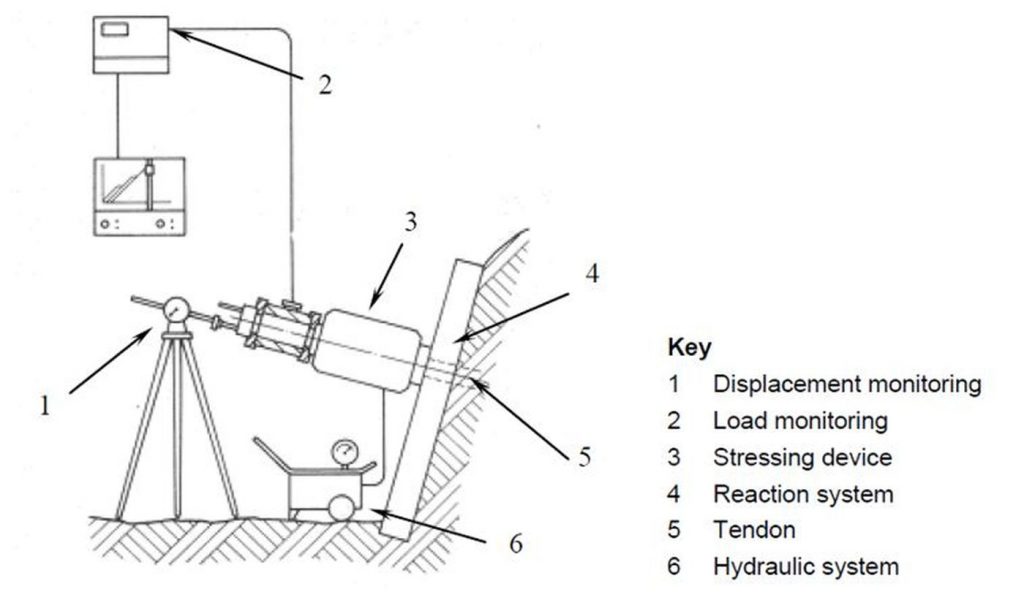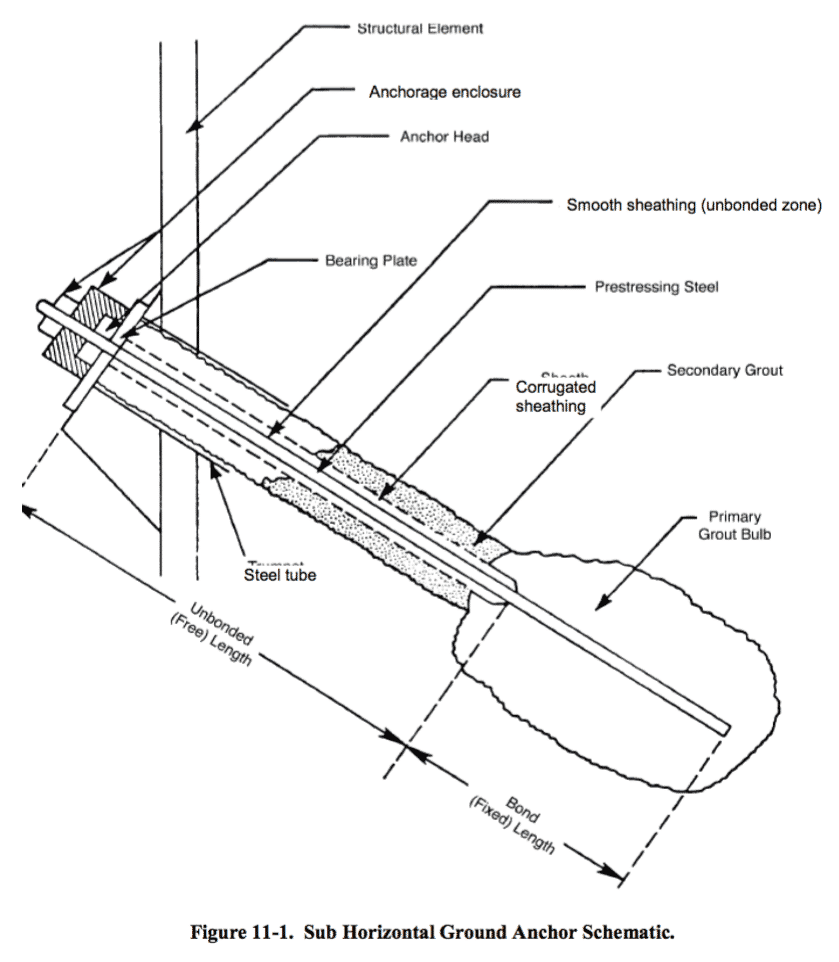Exactly How Durable Earth Anchors Job: A Comprehensive Guide to Dirt Anchoring Solutions
Sturdy Earth supports play a vital role in providing stability and support in different building and construction applications. By installing deeply into the ground, they withstand side and upright forces successfully. Various types of anchors deal with different soil conditions, making them functional. Comprehending their mechanics and installment techniques is essential for optimizing efficiency. What variables affect their performance, and just how do they contrast to conventional approaches? The solutions might amaze you.
Understanding Durable Earth Anchors
Durable Earth supports offer as crucial components in numerous construction and landscaping projects, supplying stability and assistance in challenging soil problems. These anchors operate by being installed into the ground, where they withstand side and upright forces. Their design permits safe add-on to structures, guaranteeing they continue to be anchored against soil activity or outside loads.The effectiveness of heavy-duty Earth anchors greatly depends on the kind of dirt and the support's installation deepness. Proper installment techniques are important, as they identify the anchor's holding capacity. Ecological elements, such as moisture and freeze-thaw cycles, can also affect performance.These supports are frequently made use of in applications varying from protecting fences and keeping wall surfaces to maintaining momentary structures throughout unfavorable climate condition. Comprehending the concepts behind heavy-duty Earth supports is important for professionals seeking to improve the longevity and safety of their projects.
Sorts Of Heavy-Duty Earth Anchors
Different sorts of sturdy Earth anchors are made to fulfill specific requirements based on dirt conditions and task requirements. Helical supports, including screw-like blades, are efficient in softer soils, offering high load capabilities and very easy installation. Driven supports, which are inculcated the ground, appropriate for rough terrains and provide immediate lots assistance. Tie-back anchors are commonly made use of in keeping wall surface applications, allowing for lateral assistance by securing right into the ground at an angle. An additional type is the cast-in-place anchor, perfect for concrete applications, as they are integrated into foundations for enhanced security. Finally, dirt screw anchors are versatile options that can be made use of in different dirt kinds, providing dependable tension and compression capacities. Each kind serves distinct applications, ensuring stability and security in building and construction and landscaping projects. Understanding these options enables notified decisions in picking the suitable Earth anchoring solution.
The Mechanics of Dirt Anchoring

Comprehending the technicians of soil anchoring requires an exam of various types of Earth anchors and their installment methods. Each anchor type offers special characteristics that influence its effectiveness in various dirt conditions. Appropriate setup methods are necessary for maximizing the anchoring system's security and performance.
Types of Earth Anchors
Earth supports, essential components in dirt anchoring systems, come in a number of kinds, each created for details applications and soil problems. One of the most usual kinds include screw supports, which are twisted right into the ground, providing strong lateral resistance. Helical anchors include blades that enable for efficient installation in numerous soil types, making them appropriate for both irreversible and temporary applications. Driven supports, generally made from steel, are inculcated the dirt and work in rough or dense environments. Auger anchors use a helical layout to assist in installment in softer dirts. Plate anchors consist of a level plate hidden flat, distributing lots over a bigger area, perfect for applications needing high tons capabilities in cohesive soils.
Setup Methods Discussed
Appropriate installment strategies are important for the effectiveness of soil anchoring systems. The procedure usually begins with site assessment, validating the chosen place can support the support's tons. After determining the proper anchor kind, proper opening deepness and angle must be developed. The installment entails driving the support into the ground utilizing specialized devices, such as manual or hydraulic chauffeurs, to accomplish best embedment. Post-installation, tensioning the support is essential to assure stability; this is often confirmed with load testing. Additionally, surrounding dirt conditions must be checked to stop displacement. Adhering to these methods not just boosts the support's efficiency however additionally lengthens its life-span, supplying reliable assistance for numerous applications.
Applications of Heavy-Duty Earth Anchors
While heavy-duty Earth supports are often connected with construction and landscaping, their convenience encompasses a variety of applications across various sectors. In civil engineering, they provide vital assistance for maintaining walls, making sure stability in locations susceptible to dirt disintegration. The marine sector makes use of these anchors for securing anchors and marinas, preventing motion brought on by trends and currents. Furthermore, in the telecom market, sturdy Earth anchors are considerable for maintaining cell towers and various other tall frameworks against wind forces. Agricultural applications likewise benefit, as these anchors can secure frameworks like greenhouses and animals secure fencing, ensuring they endure rough index climate condition. In eco-friendly energy projects, such as wind farms, Earth anchors play an essential role in safeguarding wind turbine structures, improving general security and efficiency. This broad array of applications highlights the flexibility and dependability of heavy-duty Earth supports across numerous fields.
Benefits Over Typical Anchoring Methods
Although conventional anchoring techniques have long been trusted for stability, sturdy Earth supports provide significant advantages that improve efficiency and performance. One major benefit is their remarkable load-bearing capacity, which permits them to stand up to greater pressures without failure. This strength makes them perfect for demanding applications, such as in building and energy installations.Additionally, durable Earth supports are developed for deeper setup, offering greater stability in numerous soil conditions, including loosened or sandy soils. Their resistance to deterioration and environmental variables ensures a much longer lifespan and reduced upkeep expenses contrasted to traditional methods.Moreover, these supports can be set up with very little disruption to the surrounding area, preserving useful source the honesty of the landscape. Generally, heavy-duty Earth supports present a reliable and reputable option for anchoring needs, surpassing the constraints often connected with traditional anchoring techniques.
Installment Process and Best Practices
The installment procedure for dirt securing solutions starts with complete preparation and website evaluation to ensure peak efficiency. Following this, a detailed setup overview provides clear guidelines for reliable implementation (tensile load anchors). Sticking to these best methods is vital for accomplishing reliable and lasting anchoring outcomes
Prep Work and Site Assessment
Efficient preparation and extensive site analysis are important action in the installation of dirt anchoring options. Prior to installment, the soil type have to be assessed to establish its bearing capability and suitability for securing. Performing a geotechnical survey can supply important information regarding dirt make-up, moisture degrees, and prospective ground motion. In addition, identifying existing structures, plant life, and energies is necessary to prevent interference throughout installment. The area must be removed of debris and barriers to ensure safe access for equipment. Weather should additionally be monitored, as unfavorable conditions can influence both safety and security and installment efficiency. By carefully preparing the website and reviewing all relevant elements, the likelihood of successful anchor efficiency is substantially boosted.
Step-by-Step Installment Overview
A complete setup process is important for attaining perfect performance of dirt anchoring remedies. The installment begins with choosing the suitable support type and assuring the site is clear of particles. Next, proper hole placement is figured out based upon tons requirements. As soon as the place is established, openings are pierced to the defined deepness and diameter using the right tools. The support is after that inserted right into the opening, ensuring it is lined up appropriately. After protecting the support, soil is backfilled and compressed to enhance stability. It is vital to comply with manufacturer guidelines throughout the process. A post-installation evaluation validates that the supports are appropriately located and functioning as meant, supplying dependable assistance for the intended application.

Maintenance and Evaluation of Earth Anchors
Normal maintenance and examination of Earth supports are necessary for making sure long-lasting efficiency and security. Routine checks permit the very early detection of problems such as deterioration, loosening up, or dirt activity. Assessors ought to look for indicators of rust or degradation on the anchor elements, particularly at the connection points. Additionally, the surrounding soil must be analyzed for erosion or adjustments in moisture content, which can impact support effectiveness.It is advisable to develop a routine inspection routine, ideally a minimum of when a year, depending upon have a peek at these guys ecological conditions. Throughout assessments, all noticeable parts should be cleaned to eliminate dust or particles that might hide possible issues. Any type of signs of distress, such as tilting structures or unusual settling, need to trigger immediate analysis. Appropriate documentation of assessments can assist in tracking support performance gradually and facilitate timely maintenance actions, guaranteeing the anchors continue to be practical and dependable.
Frequently Asked Concerns
What Materials Are Heavy-Duty Earth Anchors Usually Made From?
Sturdy Earth supports are normally created from resilient products such as galvanized steel or stainless steel, guaranteeing strength and resistance to deterioration. These products give lasting support and security in various dirt problems and applications.
Exactly How Do Dirt Conditions Impact Anchor Efficiency?
Dirt problems substantially affect anchor performance. Aspects such as soil kind, dampness content, and compaction influence the anchor's hold and stability, with cohesive soils commonly giving much better resistance than sandy or loose soils, affecting total effectiveness.
Can Heavy-Duty Earth Anchors Be Reused After Elimination?
Durable Earth anchors can be reused after removal, offered they are checked for damage and wear. Proper cleansing and maintenance boost their longevity, guaranteeing efficient performance in subsequent installations when conditions enable for risk-free reinstallation.
What Are the Environmental Effects of Utilizing Earth Anchors?
The ecological impacts of making use of Earth anchors include potential soil disruption, interruption of neighborhood ecological communities, and feasible contamination of groundwater. If utilized properly, their advantages typically outweigh these worries, promoting security in numerous applications.
Exactly how Do I Pick the Right Anchor for My Job?
